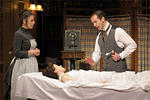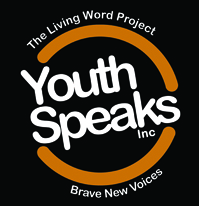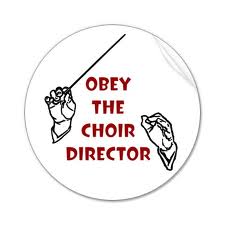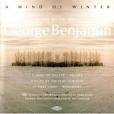 One opera, two concerts, and a drag review. Just your average San Francisco weekend.
One opera, two concerts, and a drag review. Just your average San Francisco weekend.
1. Pearls Over Shanghai at the Hypnodrome: San Francisco’s current obsession with all things to do with Shanghai in light of the city’s twin-city relationship with the Chinese port town and the upcoming Shanghai Expo this summer in which San Francisco will feature prominently, finds its antidote with the Thrillpeddlers’ zany, gender-bending homage to misplaced Chinoiserie. There’s nothing politically correct about Pearls over Shanghai, a show which originally premiered in 1970 under the auspices of the legendary drag performance group The Cockettes. Just a lot of drag kings and queens wearing glitter and singing about opium. This latest version even features some original members of the Cockettes troupe. The show has just been extended as is well worth catching.
2. Sharon Knight at the Noe Valley Ministry: I would have liked to stay at the Glass House music event on Saturday evening to catch Voicestra alumni Dave Worm’s Sovoso ensemble performing. But I had to get to a friend’s party so only caught the singer Sharon Knight performing a bunch of Celtic, pirate and other bits of folk music. I love this repertoire, but I didn’t feel very inspired by Knight’s performance. She and her guitarist were out of tune for the first song and I generally found the musical arrangements to be lacking in originality.
3. Wozzeck at Yerba Buena Center for the Arts: Ensemble Parallele’s production of John Rea’s chamber orchestration of Alban Berg’s hard-hitting opera based on a real-life murder is packed with vivid visual images and rich singing. Baritone Bojan Knezevic brings the perfect combination of manly softness to the title role. And I love Rea’s orchestration. Its intimacy increases the compact tension of Wozzack fraught work.
4. Monteverdi’s Vespers of 1610 at St. Mark’s Lutheran Church: American Bach Soloists assembled a remarkable trio of soloists (tenor Derek Chester and sopranos Jennifer Ellis and Abigail Haynes Lennox) for this crisp, dancing and warm performance of Monteverdi’s great work. The venue was sold out. Apparently all four of ABS’ concerts are also at capacity, which is well-deserved.

 The winner of the 2009 Will Glickman Award for best play to have had its world premiere in the Bay Area is playwright Sarah Ruhl for In the Next Room (or the vibrator play). The work premiered last February at
The winner of the 2009 Will Glickman Award for best play to have had its world premiere in the Bay Area is playwright Sarah Ruhl for In the Next Room (or the vibrator play). The work premiered last February at 
 Patti Smith only heard the news about her friend Howard Zinn’s death shortly before going on stage at the Herbst Theatre in San Francisco last night to talk about her
Patti Smith only heard the news about her friend Howard Zinn’s death shortly before going on stage at the Herbst Theatre in San Francisco last night to talk about her The most palpable thing about watching Yo-Yo Ma and Emanuel Ax perform a recital of works by Schumann, Chopin and Peter Lieberson last night at
The most palpable thing about watching Yo-Yo Ma and Emanuel Ax perform a recital of works by Schumann, Chopin and Peter Lieberson last night at  It’s so often the case out here on the West Coast that by the time an arts happening reaches us, it’s been so talked about that it can feel stale or overexposed before it even arrives. This happens a lot with touring Broadway shows (e.g. Doubt and August: Osage County.) The hype can have an adverse affect on the productions, setting expectations too high which often leads to disappointment.
It’s so often the case out here on the West Coast that by the time an arts happening reaches us, it’s been so talked about that it can feel stale or overexposed before it even arrives. This happens a lot with touring Broadway shows (e.g. Doubt and August: Osage County.) The hype can have an adverse affect on the productions, setting expectations too high which often leads to disappointment. It seems odd to me that an artform should be defined by the space in which it is presented rather than anything intrinsic to the art itself. But this seems to be the case with cabaret. The word literally means “room”. Here’s the definition from the
It seems odd to me that an artform should be defined by the space in which it is presented rather than anything intrinsic to the art itself. But this seems to be the case with cabaret. The word literally means “room”. Here’s the definition from the  Today I’ll be a guest on
Today I’ll be a guest on  I’m probably going to make myself very unpopular with this blog post. For what kind of cold-hearted arts critic would say anything negative about
I’m probably going to make myself very unpopular with this blog post. For what kind of cold-hearted arts critic would say anything negative about  For most people, the word “choir” evokes an image of a group of people standing together singing. Last weekend, I learned that the term can also apply do dance.
For most people, the word “choir” evokes an image of a group of people standing together singing. Last weekend, I learned that the term can also apply do dance. Just as it’s often the case that playwrights and screenwriters aren’t always the best people to direct their own plays and movies, so composers don’t necessarily do an optimal job leading performances of their works from the podium.
Just as it’s often the case that playwrights and screenwriters aren’t always the best people to direct their own plays and movies, so composers don’t necessarily do an optimal job leading performances of their works from the podium. The media landscape is in such a mess at the moment that media organizations should be shoring up their energies, focusing on turning out high quality product and finding ways to make sure that that product reaches an audience. There’s strength in numbers, so it makes sense for media organizations of a similar kind to look for ways to partner with each other and help each other out.
The media landscape is in such a mess at the moment that media organizations should be shoring up their energies, focusing on turning out high quality product and finding ways to make sure that that product reaches an audience. There’s strength in numbers, so it makes sense for media organizations of a similar kind to look for ways to partner with each other and help each other out.